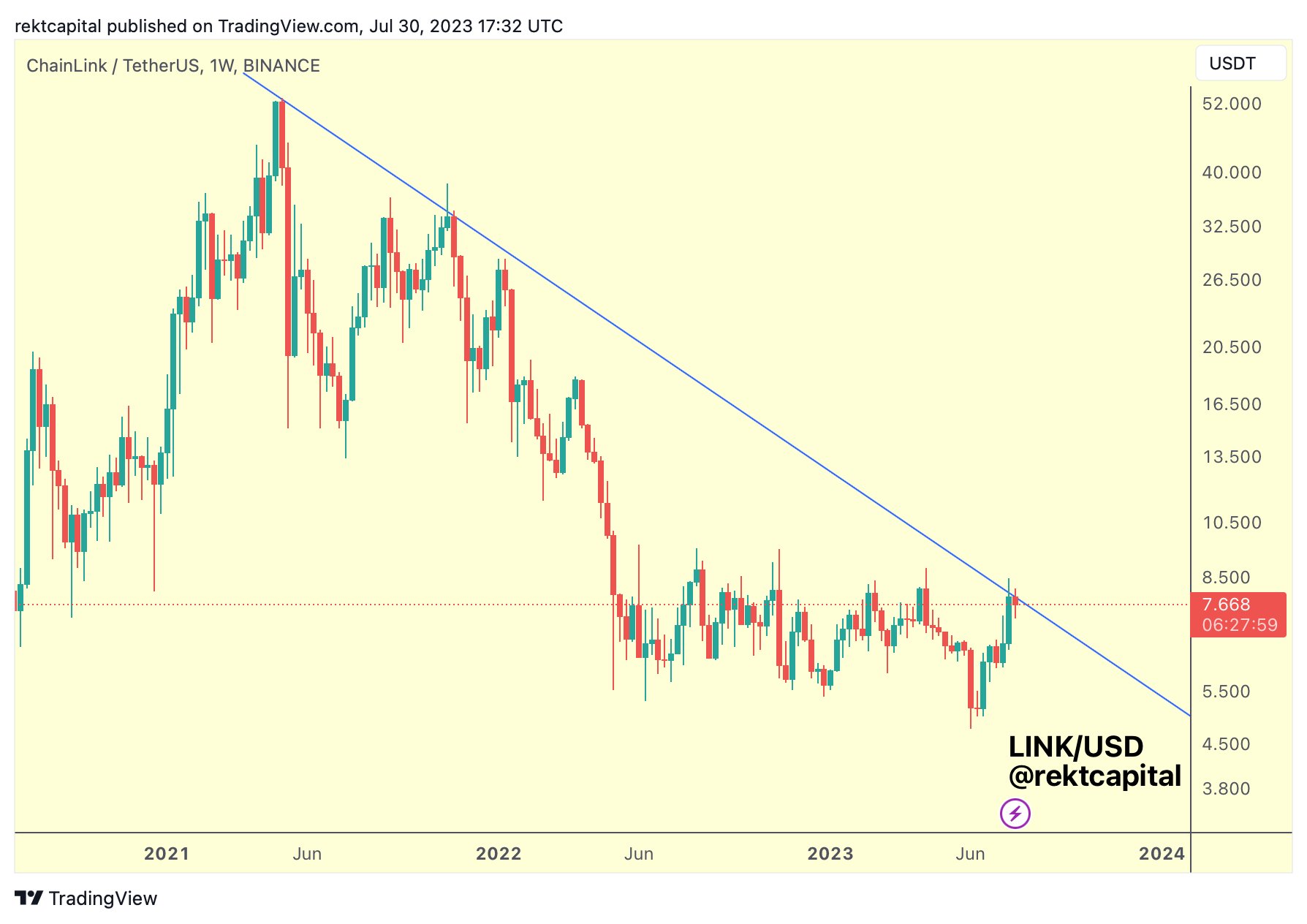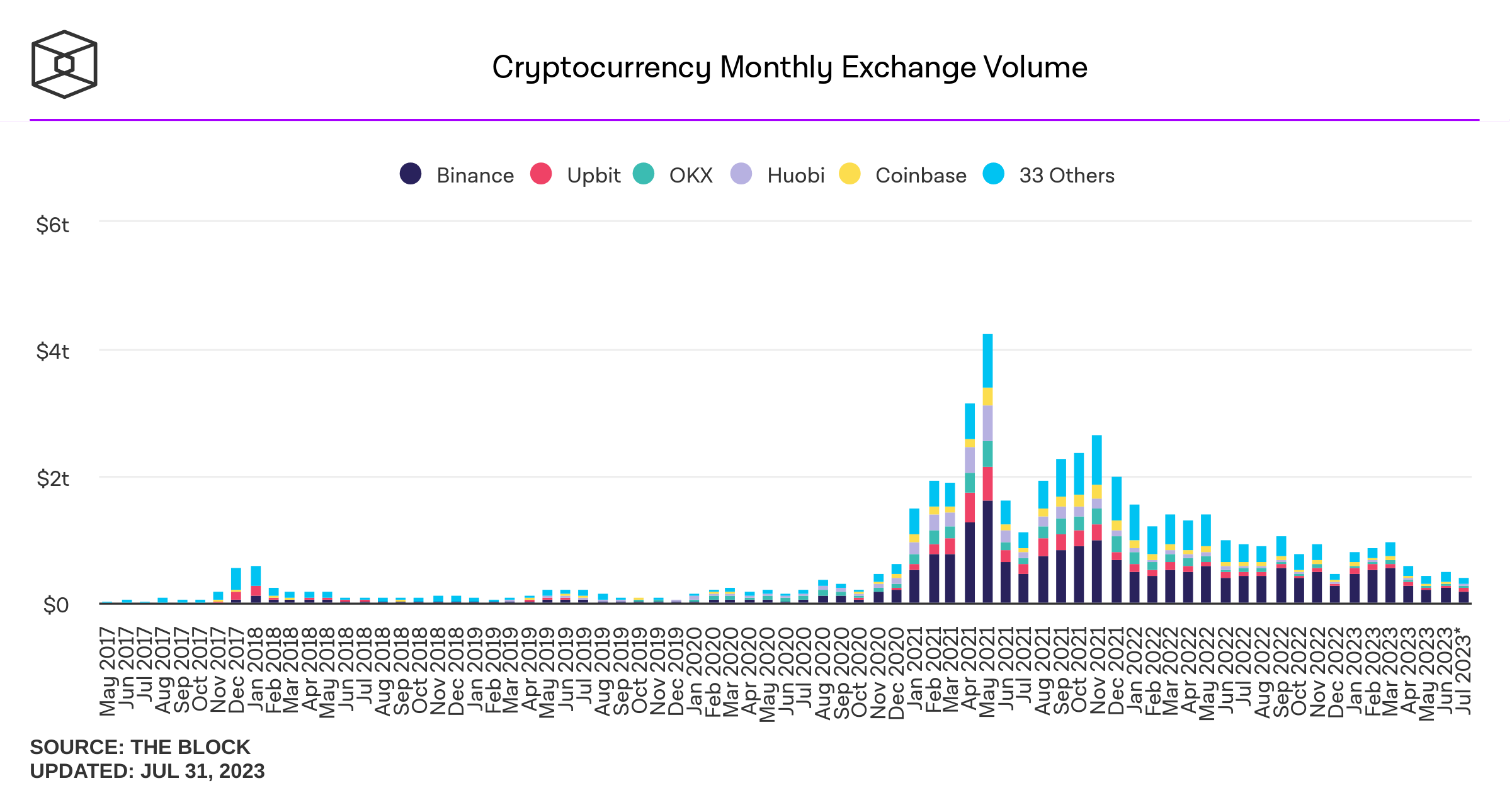- Chainlink (LINK) traded to highs of $8.44 before retreating amid broader market uncertainty.
- A top crypto analyst says LINK seeing a weekly close below the macro downtrend line portends fresh losses.
- The “Macro Breakout is postponed” the analyst noted on Monday.
Chainlink posted an impressive run in the week of July 13-21, notching a +20% gain in a single day on July 20 as it hit a three-month high of $8.44. On-chain volume spiked to over $347 million as traders poured into the altcoin amid positive network developments.
Chainlink price analysis
LINK bulls appeared to be on the way to retesting a key technical level just under $10, with price poised to break a multi-year macro downtrend.
Crypto analyst Rekt Capital highlighted this on Friday, identifying a potential weekly close above the macro downtrend line as a likely indicator of bullish strength.
As can be seen in the chart below, Chainlink price has recoiled from the crucial hurdle with a weekly close below. According to the analyst, the scenario where the would-be macro breakout has fizzled out (at the moment.)
“$LINK has ultimately performed its new Weekly Close below the Macro Downtrend. As a result, the Macro Breakout is postponed. Unless #LINK is able to reclaim this Macro Downtrend as support, price is positioning itself up for a rejection from here,” Rekt Capital shared on X (fka Twitter).
 Chainlink weekly price chart showing LINK new weekly close. Source: Rekt Capital.
Chainlink weekly price chart showing LINK new weekly close. Source: Rekt Capital.
If prices fall below $7.00, the next major support zone could be around $5.00. On the upside, $8.50 and $10 are key supply zones.
Here’s something else the analyst points out about Chainlink price performance.
In the end $LINK Weekly Closed below its Range High resistance just like it did many times in the past
And so this #LINK bounce may be a relief rally to confirm the Range High as resistance
If that’s the case LINK could drop lower in this black-black range#Crypto #Chainlink pic.twitter.com/yKlMNiPkqE
— Rekt Capital (@rektcapital) July 31, 2023
The post Chainlink price prediction: Here’s what top analyst says about LINK appeared first on CoinJournal.

